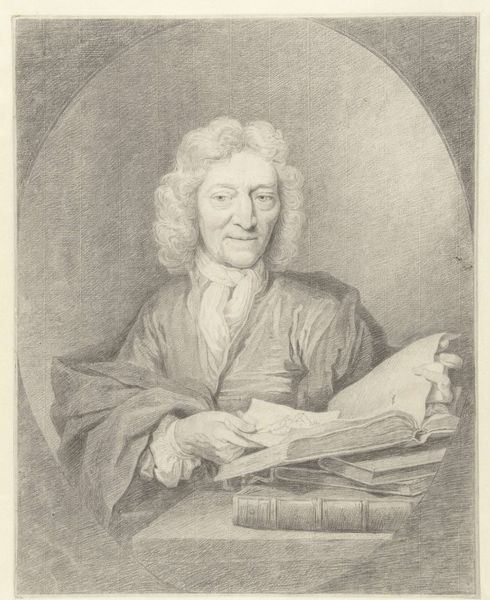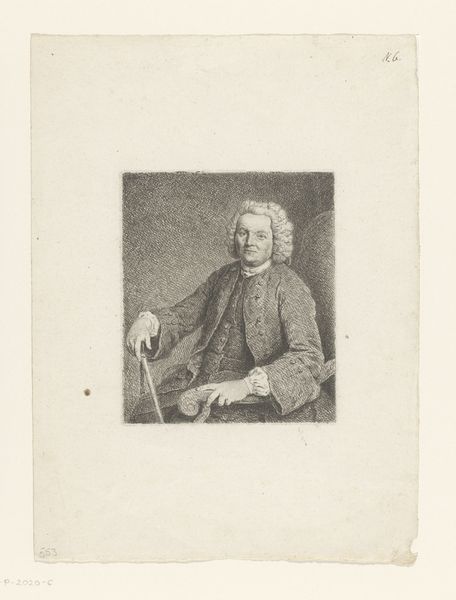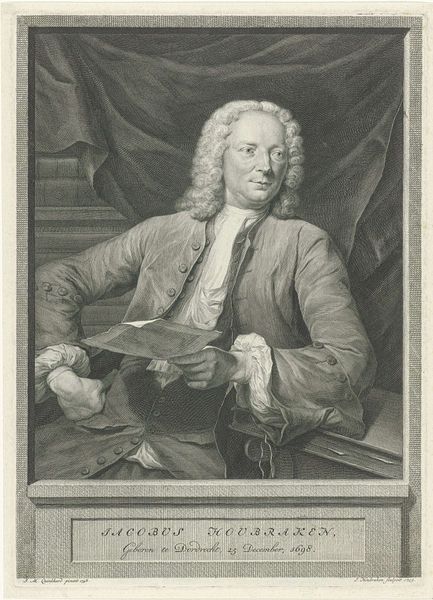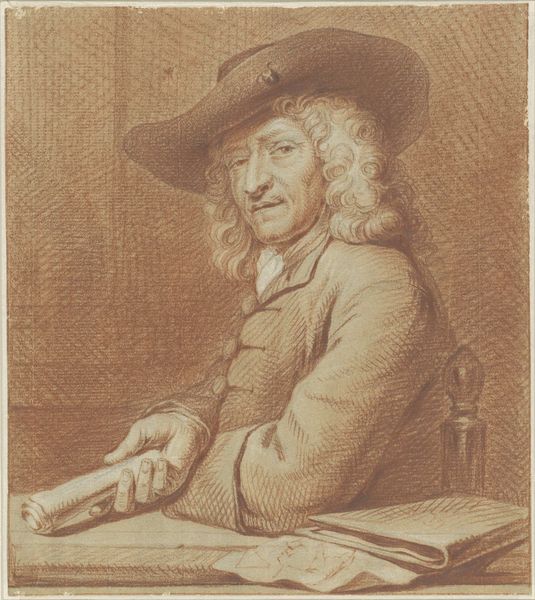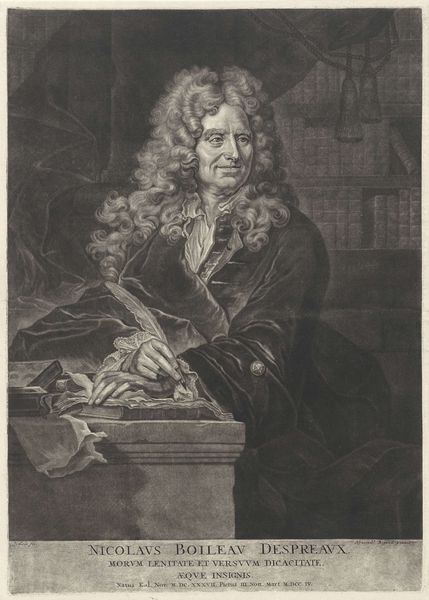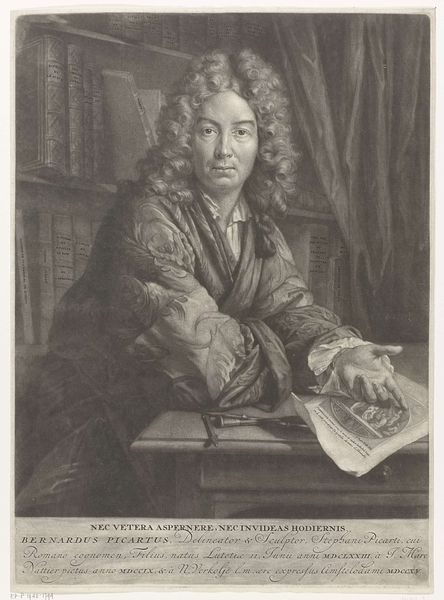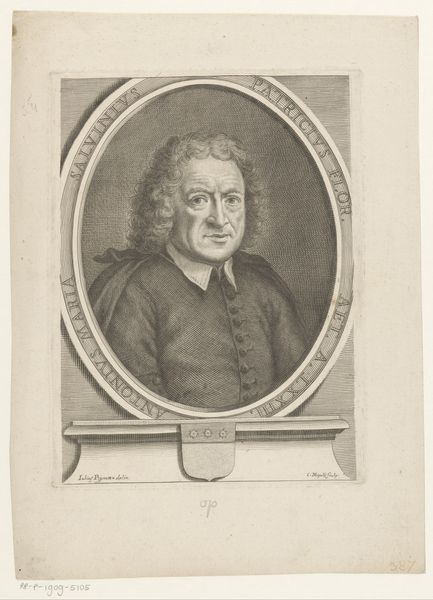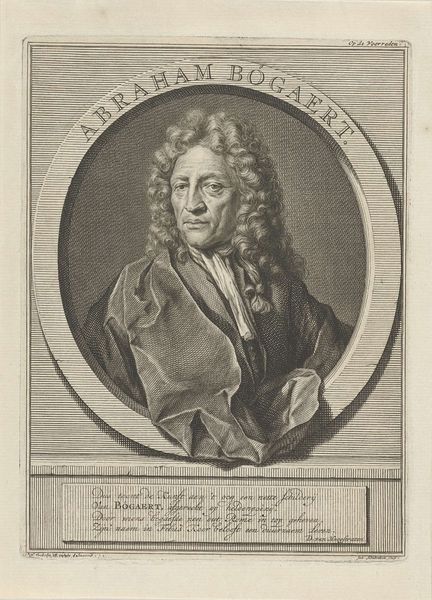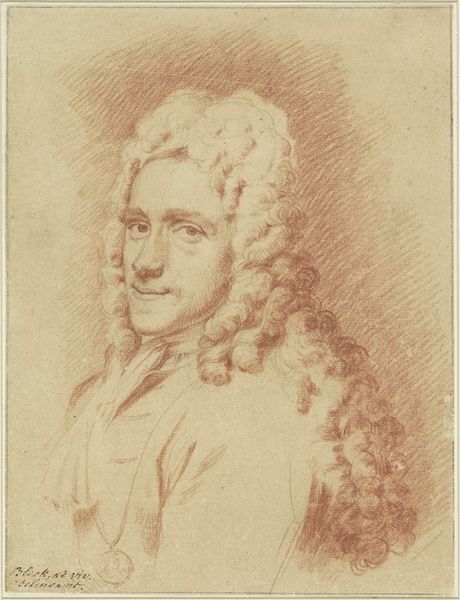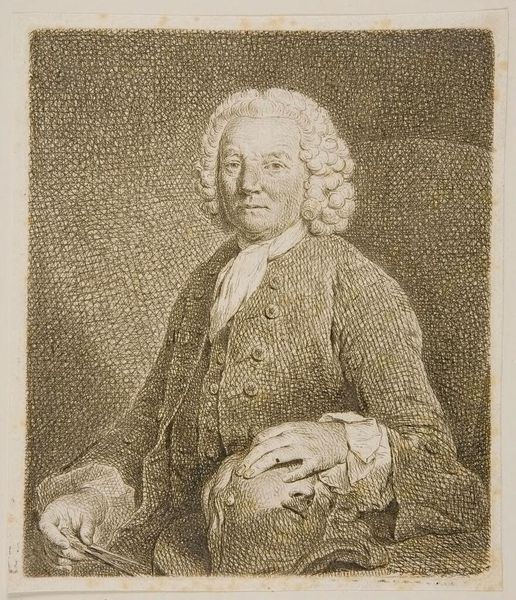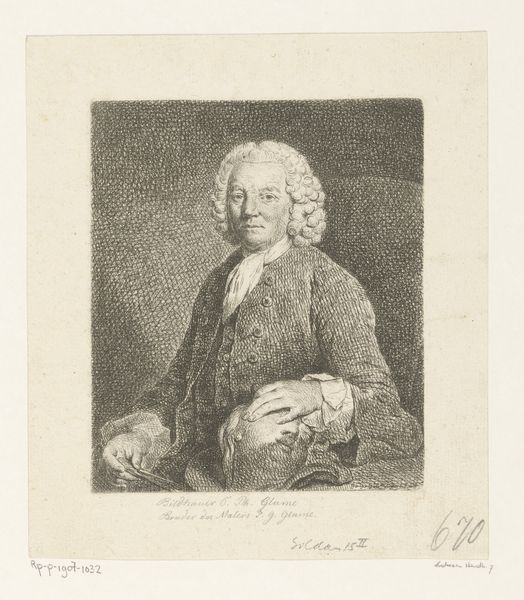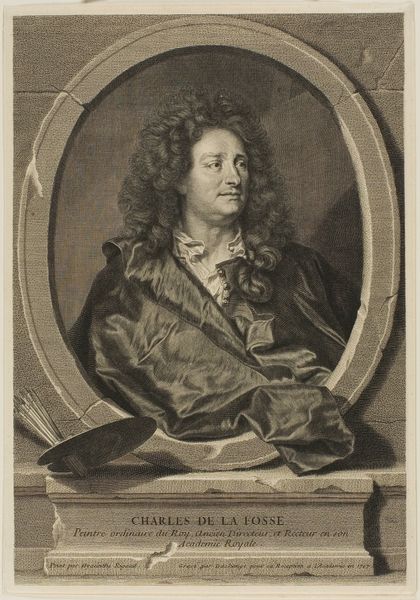
drawing, pen
portrait
pencil drawn
drawing
facial expression drawing
light pencil work
baroque
pencil sketch
old engraving style
caricature
personal sketchbook
pencil drawing
sketch
pen
portrait drawing
pencil work
genre-painting
Dimensions: height 273 mm, width 230 mm
Copyright: Rijks Museum: Open Domain
Curator: What a splendid, almost whimsical portrait! Editor: It’s fascinating how Boonen captures such detailed expression with what appears to be just pen and ink. There’s a casual quality despite the clearly intentional composition. Curator: Indeed. The work is "Portrait of Jan Pietersz. Zomer," attributed to Arnold Boonen, and was created sometime between 1715 and 1729. It is currently held in the Rijksmuseum. I am particularly interested in how the layering and the different strokes are working together to achieve this rendering, considering it might be considered ‘mere’ sketch. Editor: It does feel rather immediate and intimate, almost like peering into a private moment. Is that rendering itself suggestive of class and gender performances of that historical period? I am sure it is. Also, consider the role of the sitter Jan Pietersz. Zomer and its position as a seller of prints. Curator: Yes, that’s a great point. Think of the labour, skills, the accessibility enabled, and the cost reduction required to convert original work into printable. Zomer's identity becomes embedded into every copy of prints traded around Europe, to enhance his reputation but also the access to the images. Editor: How the print market affected artistic expression, right? What was acceptable, how artists gained visibility. Was he shaping or reflecting tastes? It becomes more difficult to assess how revolutionary the reproduction technologies are as well, don't you think? Curator: The multiplication creates almost an artistic division of labour. Editor: Which brings us back to Boonen's rendering choices—the loose lines, seemingly casual pose. Was it influenced by the economics of the time or the medium Boonen was utilizing, or something else entirely? I can see it speaks to an emergent bourgeois self-awareness. Curator: It is a dance between the artist's vision, available technology, and, as you said, also reflects shifts in class and social structures of patronage at that moment in history. The distribution methods become key to unlock the whole potential. Editor: The Rijksmuseum really is the best place to consider these complexities… Curator: I completely agree! It has given me food for thought.
Comments
No comments
Be the first to comment and join the conversation on the ultimate creative platform.
